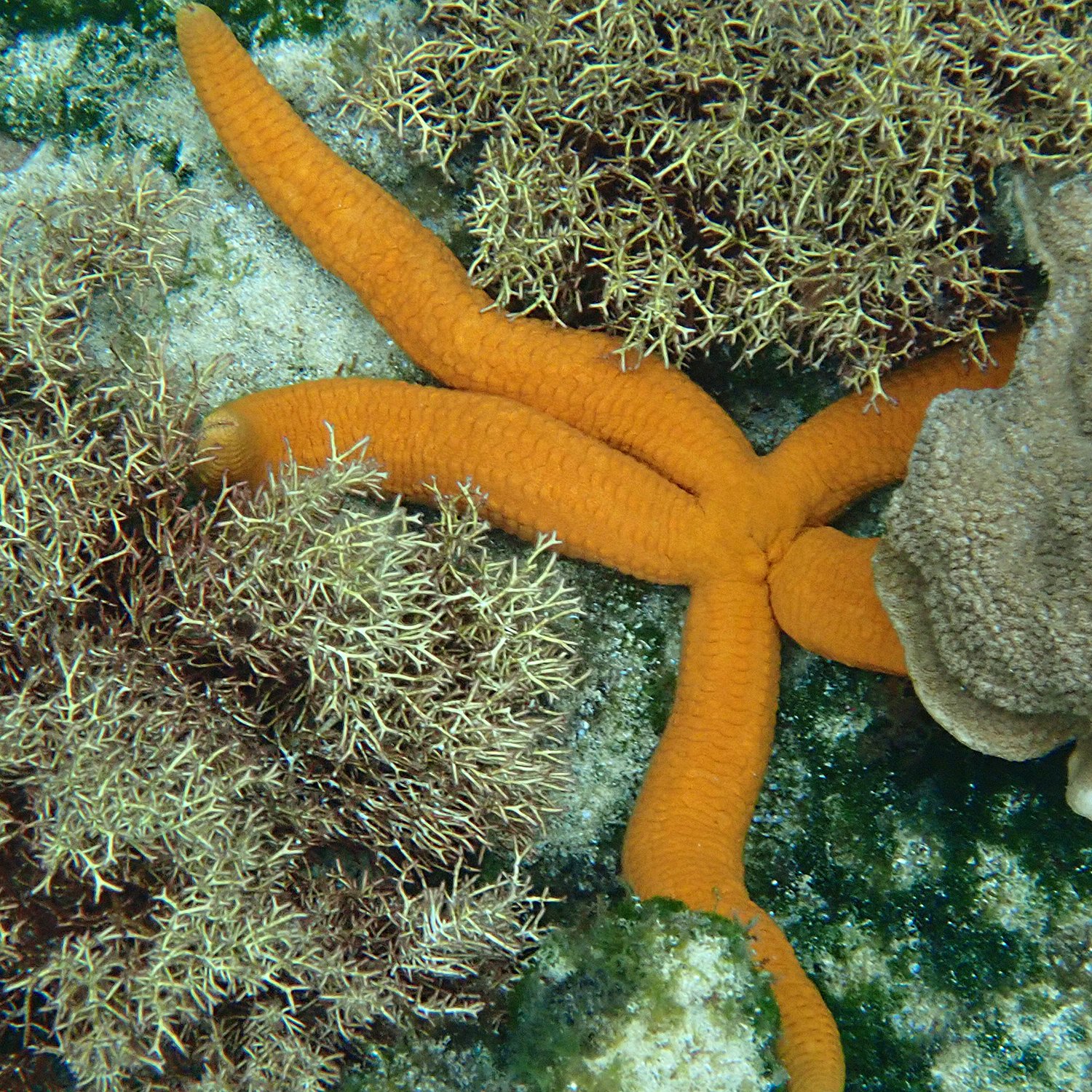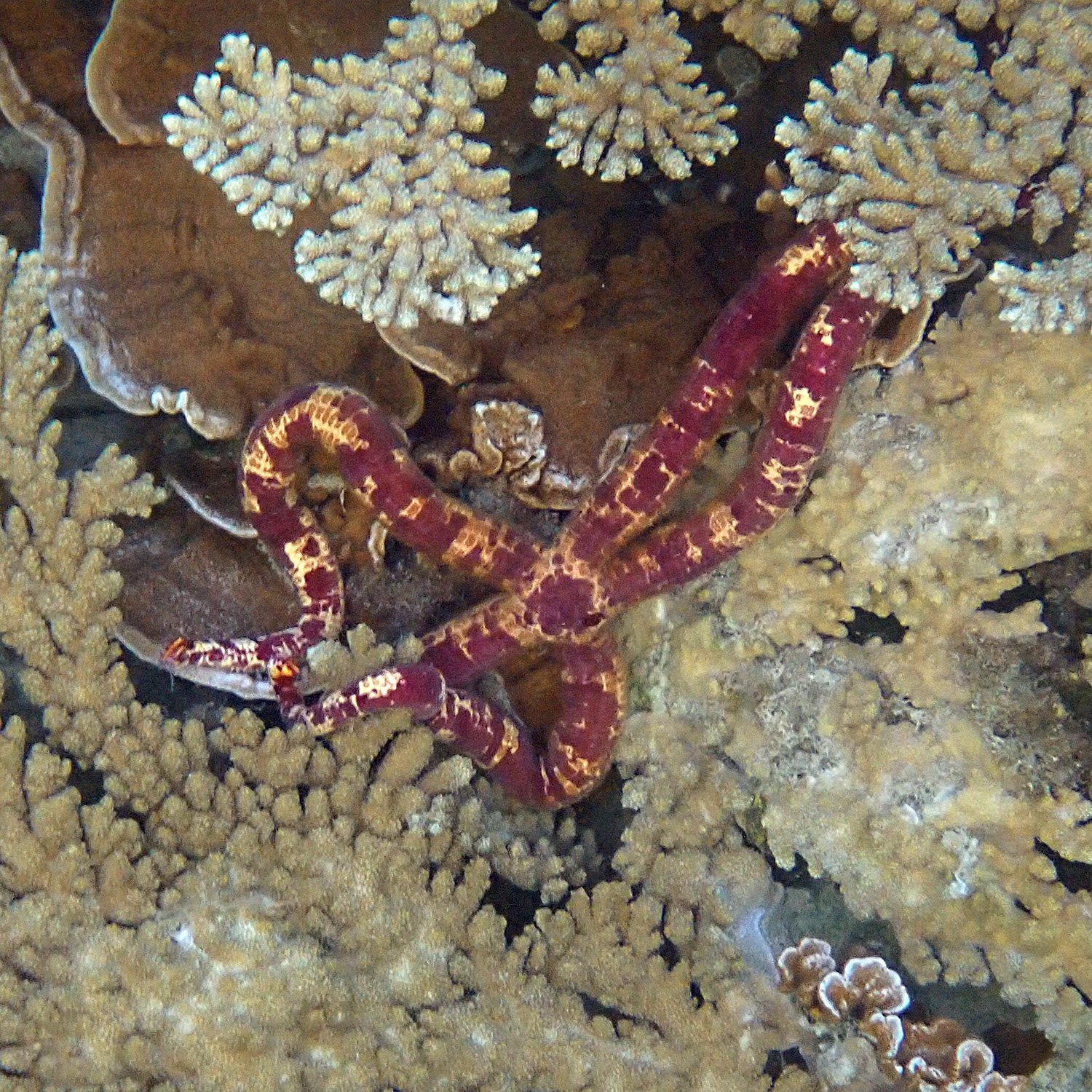In recent years, marine scientists have been giving these underwater stars an image makeover. The starfish of our childhoods, for those of you who have a few beachside summers under your beach towel, is now more properly known as a sea star.
Starfish, sea stars, are not fish; they don’t have gills, fins or scales or any other fishy bits, but instead they have more in common with sea urchins and sand dollars, and, like them, are a member of the echinoderm family.
So now you know that they are called sea stars. No excuses!
As we have a few different varieties inside the reef, but not in huge numbers, I thought I’d put together a few cool facts about them:
The madreporite, or sieve plate, is a little disc on the central section of the body
Sea stars don’t have blood. Instead, they pump sea water in through a madreporite, or sieve plate, which looks like a little disc on the central section of the body. You’ve probably seen these but never really registered that it was anything special! I just thought it was an anomaly on the skin, like a little bit of scar tissue!
The water is pumped around the sea star through a web of channels to tube feet. Each tube foot consists of an ampulla and a podium. The ampullae are little pouches that control the water going into the podia of the sea star. When a sea star needs some suction, the ampulla draws the water up from its podium allowing it to secrete a ‘glue’ that lets them adhere to whatever surface they are on.
Detail of one of the sea star’s ‘eyes’ at the end of an arm
At the end of each arm of the sea star is a tiny red dot. This is its ‘eye’, except it can’t really see, instead it senses light and dark, like when a shadow passes across it.
Sensitive to smells in the water, they sniff out their prey’s chemical signature with their feet, and then it is their feet that carry them towards their prey. They have extra-long tube feet on each of their arms that take the lead when it comes to finding food. The sea star moves in the direction of whichever arm is pulling it the strongest.
A sea star has no brain, but it does have two stomachs. One is called a cardiac stomach, the other a pyloric one. The cardiac one is pushed out of its mouth that will engulf their food. There it will secrete powerful enzymes to start the break-down process, before pulling it back inside and passing its meal to the other stomach to finish off the process of digestion.
Detail of a sea star’s tube feet
Sea stars can breed the ‘normal’ sexual way releasing sperm (males) and eggs (females) into the water column. These hopefully find each other and live as plankton floating to new areas for the sea star to colonise. When they are ready they settle to the bottom and become new baby sea stars.
But the really cool thing is they can also reproduce asexually by dividing into two and becoming two new sea stars. This is rather handy, because it also means they can regenerate a lost arm or two if needed.
Sea stars can live as long as 35 years. However, since 2014, many sea stars, particularly along the North American Pacific coast, are succumbing to the sea star wasting disease and with a world-wide massive die off some species are now being listed as critically endangered. In places a recovery has been recorded but it is uneven and the disease is persisting in most areas. You can read more, here.
This has been linked to warming ocean temperatures.






